Study proves physical activity helps maintain mobility in older adults
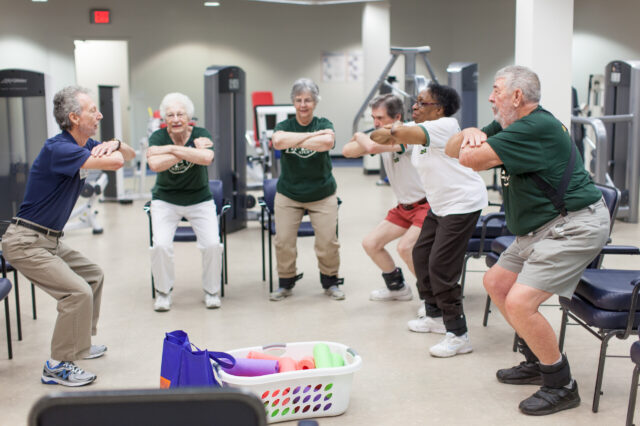
It’s something we’ve all heard for years: Exercise can help keep older adults healthy. But now a study, the first of its kind to look at frail, older adults, proves that physical activity can help these people maintain their mobility and dodge physical disability.
A new University of Florida study shows daily moderate physical activity may mean the difference between seniors being able to keep up everyday activities or becoming housebound. In fact, moderate physical activity helped aging adults maintain their ability to walk at a rate 18 percent higher than older adults who did not exercise.
“The very purpose of the study is to provide definitive evidence that physical activity can truly improve the independence of older adults,” said principal investigator Marco Pahor, M.D., director of the UF’s Institute on Aging.
What’s more, moderate physical activity not only helped older adults maintain mobility but also helped prevent the occurrence of long-term mobility loss. Co-principal investigator Jack Guralnik, Ph.D., a professor of epidemiology and public health at the University of Maryland School of Medicine, said there was a 28 percent reduction in people permanently losing the ability to walk easily.
“The fact that we had an even bigger impact on persistent disability is very good,” said Guralnik, who also holds a faculty position at UF. “It implies that a greater percentage of the adults who had physical activity intervention recovered when they did develop mobility disability.”
The results will be published in the May issue of the Journal of the American Medical Association and will be presented at 1 p.m. Tuesday (May 27) at the annual meeting of the American College of Sports Medicine in Orlando.
Researchers showed that prescribed daily physical activity can prevent older adults’ loss of mobility, defined in the study as the ability to walk 400 meters, or about a quarter of a mile. Although 400 meters might sound like an arbitrary number, it’s an important figure for older adults, researchers said.
“Four hundred meters is once around the track, or from the parking lot to the store, or two or three blocks around your neighborhood,” Guralnik said. “It’s an important distance in maintaining an independent life.”
Called the Lifestyle Interventions and Independence for Elders, or LIFE, study, the study took place across eight field centers. There were two Florida field center recruitment sites at the University of Florida and Jacksonville Brooks Rehabilitation as well as field centers at Northwestern University, Pennington Biomedical Research Center, the University of Pittsburgh, Stanford University, Tufts University, Wake Forest School of Medicine and Yale University.
The researchers recruited 1,635 sedentary men and women ages 70 to 89 for the study. The participants could walk a quarter mile within 15 minutes but were at risk of losing that ability. Low physical performance can be a predictor of early death and higher hospitalization and institutionalization rates, and patients with low physical performance are not often recruited to large studies, Pahor said.
“These are people who are patients we see every day. This is why this study is so important: It includes a population that is typically understudied,” Pahor said.
The participants were randomly separated into two groups and followed for an average of 2.6 years. The first group of 818 walked 150 minutes per week and did strength, flexibility and balance training. They were monitored by two visits to field centers per week. The second group of 817 attended health education classes and performed stretching exercises. This phase of the study occurred between February 2010 and December 2013.
Staff members assessed study participants every six months, checking their ability to walk, their body weight, blood pressure and pulse rate, among other measurements. The staff was not told which participants were assigned to physical activity or to the education classes.
The study did turn up one unanticipated result: The number of people reporting hospitalizations in the physical activity group was slightly higher than in the education group, though the number was not statistically significant. The researchers think this is in part because the physical activity group had more frequent contact with research staff, possibly resulting in a higher reporting of hospitalizations. The physical activity could also have triggered underlying heart trouble and other health problems. Researchers plan to study this occurrence more closely, Pahor said.
“It’s quite a vulnerable and high-risk population,” Pahor said. “Both age and poor health were factors. We selected people who had low physical performance, which is a strong predictor for future morbidity, hospitalization, institutionalization and mortality.”
Wendy Kohrt, Ph.D., professor of medicine in the division of geriatric medicine at the University of Colorado, helped review the scientific merit of the study before the launch of the main LIFE trial. She said the information produced by this study fills gaps in researchers’ knowledge of the types of people enrolled in the study.
“As an exercise scientist, I believe this type of research is absolutely critical to establish scientific evidence on which to make recommendations for how lifestyle can beneficially influence health status,” Kohrt said. “There is a general belief among the public and the scientific and medical communities that we know exercise is good for you, so why do we need to do more research in this area? However, we still do not know whether certain types or doses of exercise are better than others, particularly for specific health conditions or diseases. The LIFE trial demonstrated that a modest increase in physical activity has the potential to help older adults maintain functional independence.”
Pahor and Guralnik said there is still a vast amount of data to unpack from the study, including looking at the effects of physical activity on the participants’ emotional well-being. The research team also plans to determine how physical activity impacted the participants’ physiological, social and biological factors.
A National Institutes of Health and National Institute on Aging Cooperative Agreement funded the study. The National Heart, Lung and Blood Institute provided additional support.
Summary of Investigators
UNIVERSITY OF FLORIDA Marco Pahor, M.D. Professor and chair, department of aging and geriatric research Director, UF Institute on Aging College of Medicine, University of Florida
“The LIFE study is the largest and longest duration physical-activity study ever conducted in older adults who are at risk of disability. It provides new evidence regarding the long-term benefit of physical activity as a major outcome for older adults, such as maintaining the ability to walk.”
Marco Pahor, M.D., is the principal investigator of the Lifestyle Interventions and Independence for Elders, or LIFE, Study. He conceived the concept and design of the study, obtained funding and supervised the administrative, technical and material conduction of the LIFE study.
UNIVERSITY OF MARYLAND, UNIVERSITY OF FLORIDA
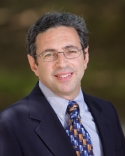
“We know that for older people, the ability to remain highly functional and independent is a very high priority. While many older people have one, or often more than one, chronic condition, the impact of those conditions on their functional abilities really affects their quality of life. By taking a group of people with a certain amount of disease, who had some functional problems, and showing, in essence, that we can pull them back from the edge by postponing or preventing loss of ability to walk is really an important finding. This result has implications for prescription of exercise by physicians for older, at-risk patients.”
Jack Guralnik, M.D., Ph.D. is the co-principal investigator of the LIFE study. During his time at the National Institute on Aging, he began pilot work to see if researchers could recruit study participants of the age and ability level involved in the LIFE study. He and his colleagues developed the screening tool, the Short Physical Performance Battery, that was used in the study to identify older persons at high risk of losing mobility. During the trial he oversaw the recruitment and retention efforts.
NORTHWESTERN UNIVERSITY

“The LIFE Study demonstrates that a moderate intensity exercise program prevents mobility loss in older, sedentary men and women. Based on results from the LIFE Study, clinicians should recommend moderate-intensity exercise, focused on walking, to prevent mobility loss in older, sedentary men and women.”
Mary M. McDermott, M.D., was principal investigator of the LIFE study at the Northwestern Field Center. She oversaw recruitment, data collection and administration of the intervention at the Northwestern Field Center. In the national study, she oversaw training and certification of the ankle brachial index measurement. McDermott also co-chaired the Emerging Science committee for the LIFE study and served on the presentation and publications committee and the measurement and retention committee.
PENNINGTON BIOMEDICAL RESEARCH CENTER
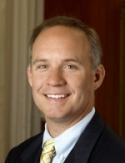 Timothy Church, M.D., Ph.D.
John S. McIlHenny Endowed Chair in Health Wisdom Professor
Pennington Biomedical Research Center Preventative Medicine Laboratory
Timothy Church, M.D., Ph.D.
John S. McIlHenny Endowed Chair in Health Wisdom Professor
Pennington Biomedical Research Center Preventative Medicine Laboratory
“This research is poised to change how health care is practiced and reimbursed in this country. The research demonstrates the power of physical activity in maintaining quality of life as we age. And it proves that it’s never too late to benefit from starting a physical activity program. Given the ever-increasing size of this portion of our population, this study has great public health and clinical implications.”
Timothy Church, M.D., M.P.H., Ph.D., is a principal investigator, co-principal investigator or investigator on a number of NIH grants, most of which address issues related to exercise and health, including exercise and the treatment of depression; exercise and cancer survivorship; exercise and maintenance of function in the elderly; and exploring the benefits of different types of exercise in individuals with diabetes. As principal investigator of one of four sites of the original pilot for the LIFE study, Church has spent much of his research career working with the team of researchers on this program. Pennington Biomedical, Church’s Preventive Medicine team and the local older adult community were key to the successful recruitment and completion of the study in Baton Rouge, Louisiana.
UNIVERSITY OF PITTSBURGH
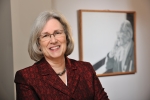 Anne Newman, M.D.
Chair, department of epidemiology Graduate School of Public Health University of Pittsburgh Health Policy Institute
Anne Newman, M.D.
Chair, department of epidemiology Graduate School of Public Health University of Pittsburgh Health Policy Institute
“Doctors have long suspected that maintaining or starting physical activity is important in promoting good health as we age. But until this study, we didn’t have the proof necessary to say that daily exercise, sustained over several years, can truly prevent the loss of mobility. Doctors can now feel confident that moderate physical activity improves the independence and mobility of older adults.”
Anne Newman, M.D., a geriatrician, supervised the Pittsburgh arm of the LIFE study. For the national study, she chaired the ancillary studies review committee and wrote the outcome procedures for cardiovascular events and the procedures for participant medical clearance at enrollment and for return after illness.
Photo credit: Ric Evans/University of Pittsburgh
STANFORD

“While people are generally aware that physical activity is beneficial, this study is the largest and longest duration randomized trial evaluating the effects of physical activity on mobility disability in older adults. It provides the hard evidence needed to change health policy.”
Abby C. King, Ph.D., a behavioral scientist, is the principal investigator for the Stanford site of the trial. For the national study, she served as co-chair of the intervention committee and a member of the presentation and publications committee.
TUFTS UNIVERSITY
 Roger Fielding, Ph.D.
Director, Nutrition, Exercise Physiology, and Sarcopenia Laboratory at the Jean Mayer USDA Human Nutrition Research Center on Aging
Roger Fielding, Ph.D.
Director, Nutrition, Exercise Physiology, and Sarcopenia Laboratory at the Jean Mayer USDA Human Nutrition Research Center on Aging
“It’s very exciting to be a part of study where the results could have far-reaching public health implications. We know that people’s ability to maintain their independence is really linked to their walking ability. So when someone loses his or her ability to walk a short distance, we see that as a major life event for that older person. If we can prevent or even delay that by motivating older adults to stick to a manageable exercise routine, meaningful improvement to quality of life can be achieved.”
The Nutrition, Exercise Physiology, and Sarcopenia Laboratory at the Jean Mayer USDA Human Nutrition Research Center on Aging successfully enrolled more than 200 men and women in the LIFE study. NEPS Laboratory director Roger Fielding, Ph.D., co-chaired the study’s intervention and operations committee, leading the design of the physical activity intervention and the Successful Aging Education Health Education intervention. Fielding was part of the team monitoring the interventions throughout the study, tracking adherence and making adjustments as needed. Going forward, the NEPS lab will use the LIFE data to try to evaluate whether varying levels of the amount of physical activity participants performed has an impact on changes in the ability to walk short distances.
Photo credit: Courtesy photo/Tufts University
WAKE FOREST UNIVERSITY
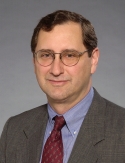
“The good news from the LIFE Study is that older adults can take positive steps to preserve walking ability. It is common for an older person’s world to shrink as walking becomes more difficult by getting out and interacting with family and friends less often. These interactions are critical to a high quality of life and have health benefits of their own. The LIFE participants didn’t do anything fancy and didn’t need any special equipment, so it’s pretty easy for anyone to get started and take these positive steps for him or herself.”
Stephen Kritchevsky, Ph.D., was responsible for the Wake Forest Field Center with Anthony Marsh, Ph.D.
YALE UNIVERSITY
 Thomas Gill, M.D.
Yale School of Medicine Humana Foundation Professor of Geriatric Medicine Director, Program on Aging Director, Claude D. Pepper Older Americans Independence Center
Thomas Gill, M.D.
Yale School of Medicine Humana Foundation Professor of Geriatric Medicine Director, Program on Aging Director, Claude D. Pepper Older Americans Independence Center
“Years from now, LIFE will be considered a landmark study, one that has informed policies to keep older persons independent in the community.”
Thomas Gill, M.D., a board-certified geriatrician, directed the Yale field center for the LIFE study. He also chaired the measurement committee for the national study, which was responsible for adjudicating the main study outcomes, including mobility disability.
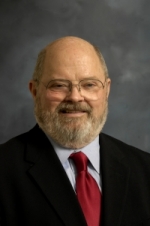 Steven N. Blair, P.E.D.
Faculty affiliate, Prevention Reseach Center
Steven N. Blair, PED, was principal investigator of the LIFE-pilot study center in Dallas and has served as a co-investigator at the Pennington Biomedical Research Center for the LIFE study. Blair serves as co-chair of the LIFE publications and presentations committee.
Steven N. Blair, P.E.D.
Faculty affiliate, Prevention Reseach Center
Steven N. Blair, PED, was principal investigator of the LIFE-pilot study center in Dallas and has served as a co-investigator at the Pennington Biomedical Research Center for the LIFE study. Blair serves as co-chair of the LIFE publications and presentations committee.